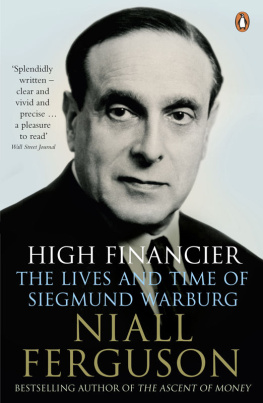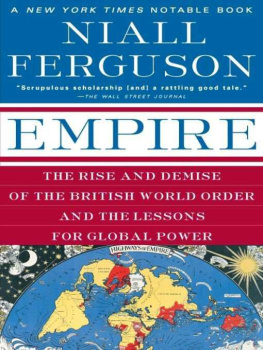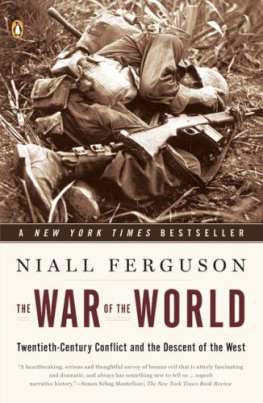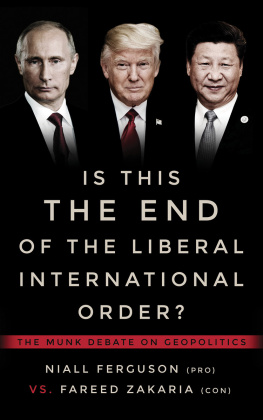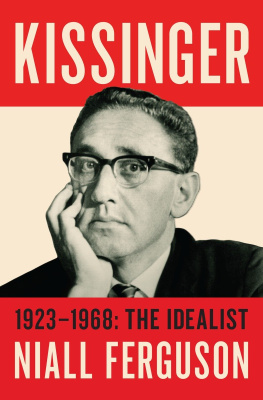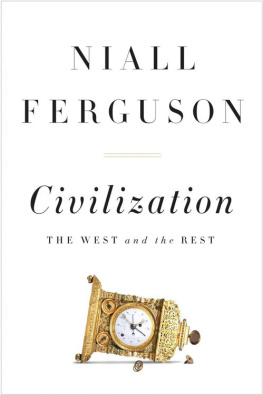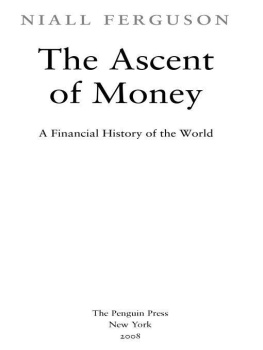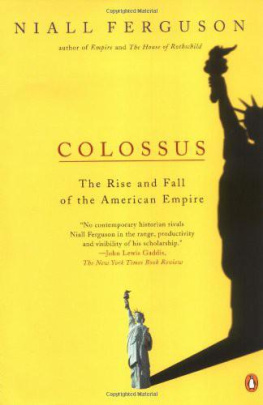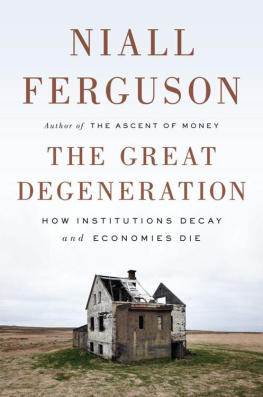Niall Ferguson - Doom: The Politics of Catastrophe
Here you can read online Niall Ferguson - Doom: The Politics of Catastrophe full text of the book (entire story) in english for free. Download pdf and epub, get meaning, cover and reviews about this ebook. year: 2021, publisher: Penguin Books Ltd, genre: Politics. Description of the work, (preface) as well as reviews are available. Best literature library LitArk.com created for fans of good reading and offers a wide selection of genres:
Romance novel
Science fiction
Adventure
Detective
Science
History
Home and family
Prose
Art
Politics
Computer
Non-fiction
Religion
Business
Children
Humor
Choose a favorite category and find really read worthwhile books. Enjoy immersion in the world of imagination, feel the emotions of the characters or learn something new for yourself, make an fascinating discovery.
- Book:Doom: The Politics of Catastrophe
- Author:
- Publisher:Penguin Books Ltd
- Genre:
- Year:2021
- Rating:3 / 5
- Favourites:Add to favourites
- Your mark:
- 60
- 1
- 2
- 3
- 4
- 5
Doom: The Politics of Catastrophe: summary, description and annotation
We offer to read an annotation, description, summary or preface (depends on what the author of the book "Doom: The Politics of Catastrophe" wrote himself). If you haven't found the necessary information about the book — write in the comments, we will try to find it.
Doom: The Politics of Catastrophe — read online for free the complete book (whole text) full work
Below is the text of the book, divided by pages. System saving the place of the last page read, allows you to conveniently read the book "Doom: The Politics of Catastrophe" online for free, without having to search again every time where you left off. Put a bookmark, and you can go to the page where you finished reading at any time.
Font size:
Interval:
Bookmark:


This is not a history of our perplexing postmodern plague, nor a general history of pandemics. This is a general history of catastropheof all kinds of disasters, from the geological to the geopolitical, from the biological to the technological. For how else are we to see our disasteror any disasterin a proper perspective?
Chapter 1
THE MEANING OF DEATH
Though life expectancy has hugely improved in the modern era, death remains inevitable and is, in absolute terms, more common than ever. Yet we have become estranged from death. Ultimately, not only are we as individuals doomed, but so is the human race itself. All the world religions and a number of secular ideologies have sought to make this eschaton seem more imminent (as well as immanent) than it really is. What we have to fear is a big disaster, not doomsday. Of the big disasters in human history, the biggest have been pandemics and wars.
Chapter 2
CYCLES AND TRAGEDIES
Catastrophe is innately unpredictable because most disasters (from earthquakes to wars) are not normally distributed, but randomly or according to power laws. Cyclical theories of history cannot get around that. Disasters are more like tragedies: those who try to predict them are unlikely to be heeded. In addition to predicting more disasters than actually happen, Cassandras are up against a bewildering array of cognitive biases. In the end, faced with uncertainty, most people just decide to ignore the possibility that they as individuals will be victims of catastrophe. The bells of hell go ting-a-ling-a-ling for you but not for me, a ditty sung by British soldiers in World War I, is humanitys signature tune.
Chapter 3
GRAY RHINOS, BLACK SWANS, AND DRAGON KINGS
Disasters are often foreseen (gray rhinos), yet even some predicted disasters can appear completely unexpected when they strike (black swans). A few have consequences beyond excess mortality that set them apart (dragon kings). Disasters are not either natural or man-made. Decisions to locate settlements near potential disaster zonesby a volcano, on a fault line, next to a river subject to severe floodingare what make most natural disasters in some respects man-made. In terms of loss of life, more big disasters happen in Asia than elsewhere. The great American disaster has been, by Asian standards, not all that disastrous.
Chapter 4
NETWORLD
The decisive determinant of the scale of a disaster is whether or not there is contagion. Social network structure is therefore as important as the innate properties of a pathogen or anything else (such as an idea) that can be virally spread. People worked out the efficacy of quarantines, social distancing, and other measures now referred to as non-pharmaceutical interventions long before they properly understood the true nature of the diseases they sought to counter, from smallpox to bubonic plague. The essence of such measures is to modify network structures to make it less of a small world. Such modifications can be spontaneous behavioral adaptations, but they usually need to be hierarchically mandated.
Chapter 5
THE SCIENCE DELUSION
The nineteenth century was a time of major advances, especially in bacteriology. But we should not succumb to a Whig interpretation of medical history. Empire forced the pace of research into infectious diseases, but it also forced the pace of the globalization of the world economy, creating new opportunities for diseases, not all of which submitted to vaccination or therapy. The 1918 influenza was a grim revelation of the limits of science. Breakthroughs in our understanding of risks can be offset by increased network integration and fragility.
Chapter 6
THE PSYCHOLOGY OF POLITICAL INCOMPETENCE
We tend to attribute too much of the responsibility for political disasters, as well as military ones, to incompetent leaders. It was a pleasing argument of the Indian economist Amartya Sen that famines were caused by unaccountable governments and avoidable market failures, not food shortages per se, and that democracy was the best cure for famines. That theory may well explain some of the worst famines in the century and a half from the 1840s to the 1990s. But why should Sens law apply only to famines? Why not to the most man-made of disasters, wars? It is a paradox that the transition from empires to more or less democratic nation-states was attended by so much death and destruction.
Chapter 7
FROM THE BOOGIE WOOGIE FLU TO EBOLA IN TOWN
In 1957, the rational response to a new and deadly strain of flu seemed to be a combination of pursuing natural herd immunity and selective vaccination. There were no lockdowns and no school closures, despite the fact that the Asian flu in 1957 was about as dangerous as COVID-19 in 2020. The success of Eisenhowers response reflected not only the nimbleness of the federal government of those days but also the Cold War context of much-improved international cooperation on issues of public health. Yet the successes of the 1950s, 60s, and 70s were deceptive. HIV/AIDS revealed the weaknesses of both national and international agencies. So, in their different ways, did SARS, MERS, and Ebola.
Chapter 8
THE FRACTAL GEOMETRY OF DISASTER
Accidents will happen, from the Titanic to Challenger to Chernobyl. Small disasters are like microcosms of big ones, but because they are less complex, we can understand them more easily. The common feature of all disasters, whether sinking ships or exploding nuclear reactors, is the combination of operator error and managerial error. Often the point of failure in a disaster is not at the top (the blunt end) or at the point of contact (the sharp end) but within middle managementa favorite theme of the physicist Richard Feynman and an insight with general applicability.
Chapter 9
THE PLAGUES
Like so many past pandemics, COVID-19 originated in China. But the varied impact of the disease on the rest of the worlds countries confounded expectations. Far from being well prepared for a pandemic, the United States and the United Kingdom fared badly. It was countries such as Taiwan and South Korea that had learned the right lessons from SARS and MERS. It was tempting to blame Anglo-American travails on the incompetence of populist leaders. However, something more profound had gone wrong. The public health bureaucracy in each case had failed. And the role of the internet platforms in disseminating fake news about COVID-19 led to poor and sometimes downright harmful adaptations in public behavior.
Chapter 10
THE ECONOMIC CONSEQUENCES OF THE PLAGUE
The shift from complacency to panic in mid-March 2020 led to economically crushing lockdowns in many countries. Were they the right solutions to the problem posed by COVID-19? The answer is probably not, but that did not make it smart for the United States to attempt a return to normality that summer (the dumb reopening) without adequate testing and tracing. The predictable result was a second, smaller wave and a tortoise-shaped recovery. Less predictable was the near-revolutionary political eruption over the issue of racism, which bore striking resemblances to mass movements precipitated by previous pandemics.
Next pageFont size:
Interval:
Bookmark:
Similar books «Doom: The Politics of Catastrophe»
Look at similar books to Doom: The Politics of Catastrophe. We have selected literature similar in name and meaning in the hope of providing readers with more options to find new, interesting, not yet read works.
Discussion, reviews of the book Doom: The Politics of Catastrophe and just readers' own opinions. Leave your comments, write what you think about the work, its meaning or the main characters. Specify what exactly you liked and what you didn't like, and why you think so.


